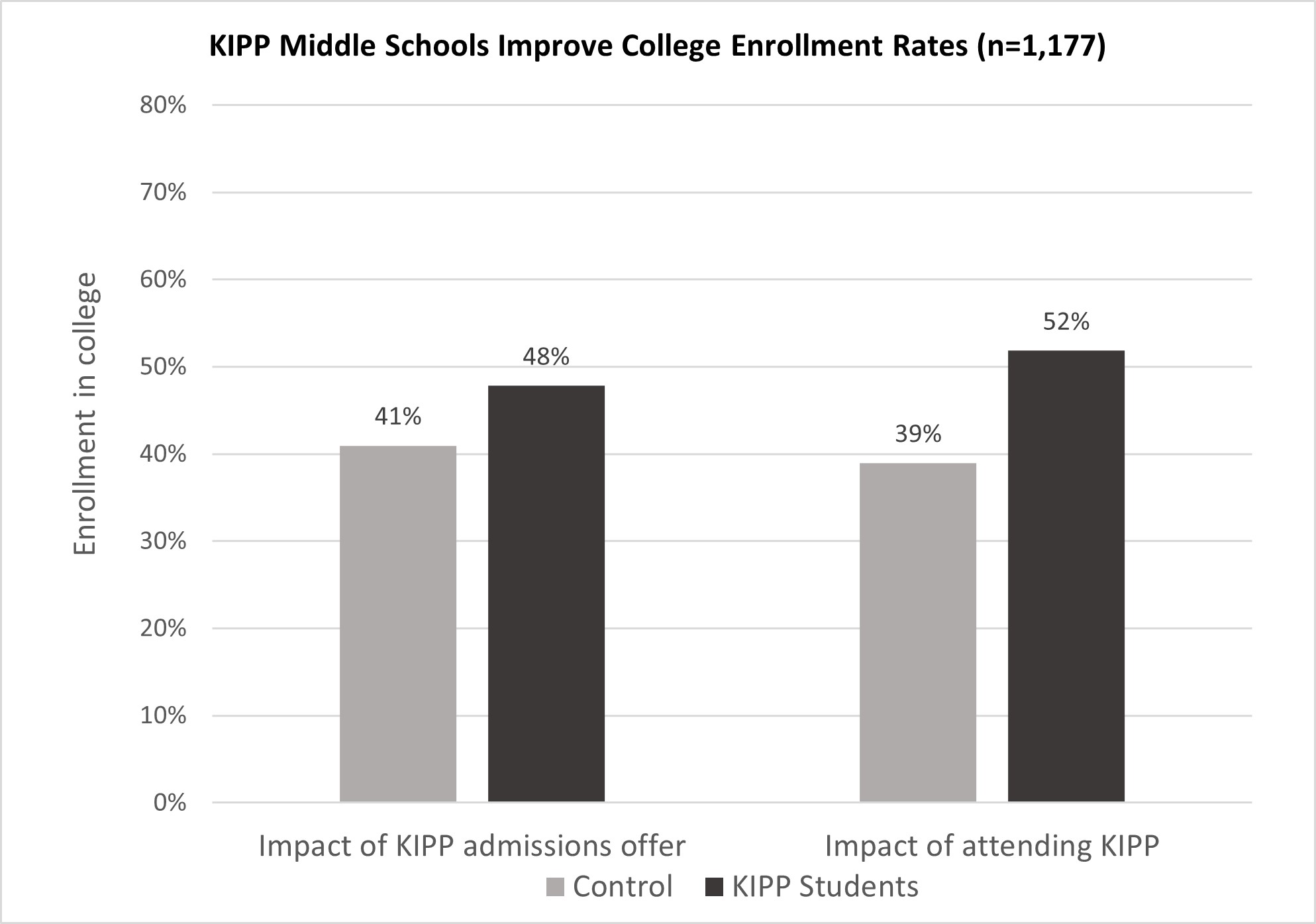KIPP Middle Schools Increase Students’ College Enrollment Rates
Ira Nichols-Barrer, Maria Bartlett, Thomas Coen, & Phil Gleason
Do KIPP Middle Schools Boost Long Run Student Outcomes?
Yes they do, according to a rigorous national study of 13 KIPP middle schools. Building on prior studies of KIPP that show KIPP middle schools have strong positive effects on students’ middle school achievement, this study found that KIPP middle schools also improve longer-term rates of enrollment in four-year college programs. Winning a lottery-based admissions offer to a KIPP middle school increased a student’s probability of enrolling in college by 7 percentage points, even though a third of these students never enrolled at KIPP. Adjusting for enrollment, attending KIPP increased college enrollment rates by 13 percentage points. This boost is similar in size to nationwide disparities in college enrollment across racial groups—a relevant benchmark since nearly all KIPP students are Black or Latinx.

How to read this chart: The chart shows that 48% of students admitted to KIPP enrolled in a four-year college degree program within two years after high school graduation, compared with 41% of control students.
What is KIPP?
The Knowledge is Power Program (KIPP) operates the nation’s largest network of charter schools. KIPP schools primarily serve low-income Black and Latinx students: when this study began in 2008, 63 percent of KIPP students were Black, 33 percent were Latinx, and 81 percent were eligible for free or reduced-price meals. KIPP emphasizes high expectations preparation for success in college, using a distinctive approach that includes items such as strong behavior policies with rewards and sanctions, longer school days and school on Saturdays, substantial autonomy for principals, and close performance monitoring. Some observers have questioned whether KIPP’s successes in improving student test scores using this approach can fully prepare students for longer-term success in college. This study directly addresses the debate.
How was this study carried out?
This was an experimental study, meeting Tier 1 ESSA evidence standards. Students who applied to KIPP through an admissions lottery were randomly selected either to receive an admission offer (“KIPP Students” in the bar chart) or to not receive an admission offer (“Control” in the chart). Due to random assignment, the difference in college enrollment rates between KIPP and control students is due to KIPP itself rather than differences in student characteristics. The study included 1,177 students who applied to 13 KIPP middle schools in 2008 or 2009, and used data from KIPP applications, K-12 records from school districts; student and parent surveys; and the National Student Clearinghouse.
Importantly, the study only tracked students up to the point of college enrollment, plus the first four semesters of progress in their college programs. It remains to be seen whether initial successes in boosting college enrollment ultimately translate into even longer-term effects on persistence in college, college graduation, and earnings in the labor market.
Full Article Citation: Nichols-Barrer, I., Bartlett, M., Coen, T., Gleason P. (2022). The Impacts on College Enrollment of a Charter Network Serving Disadvantaged Students: Evidence from KIPP Middle School Lotteries. Journal of Research on Educational Effectiveness. DOI: https://doi.org/10.1080/19345747.2022.2049406.
